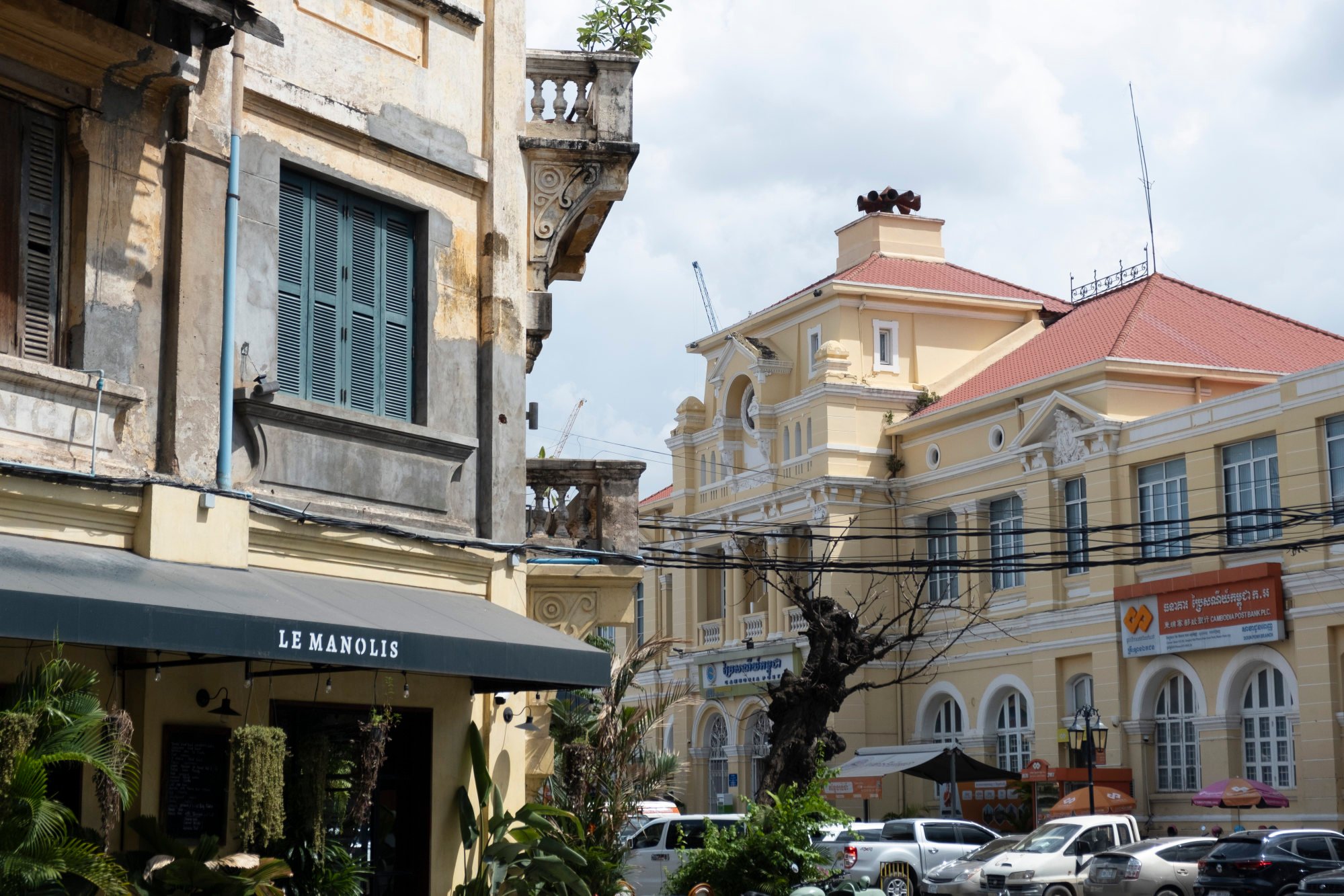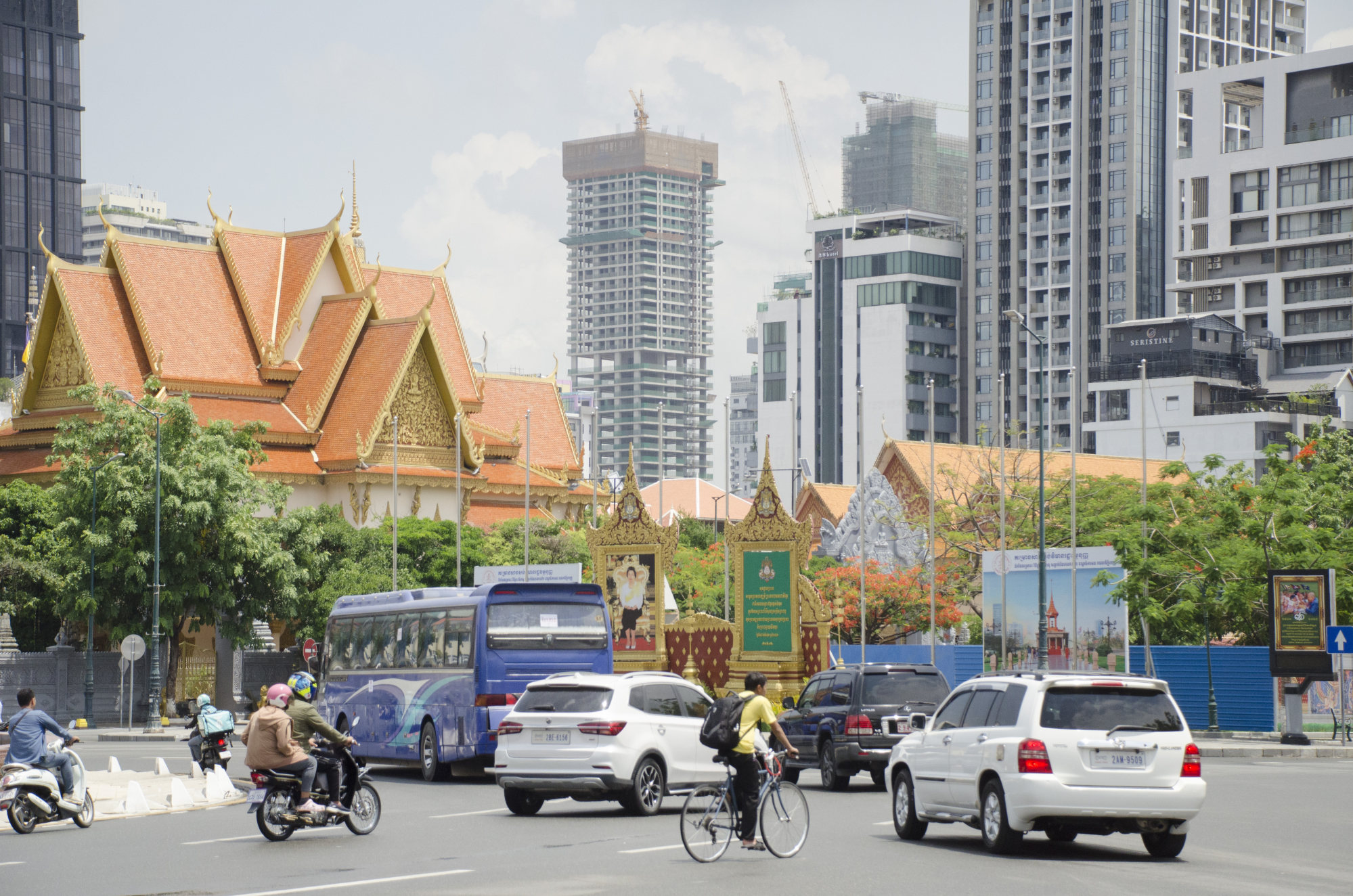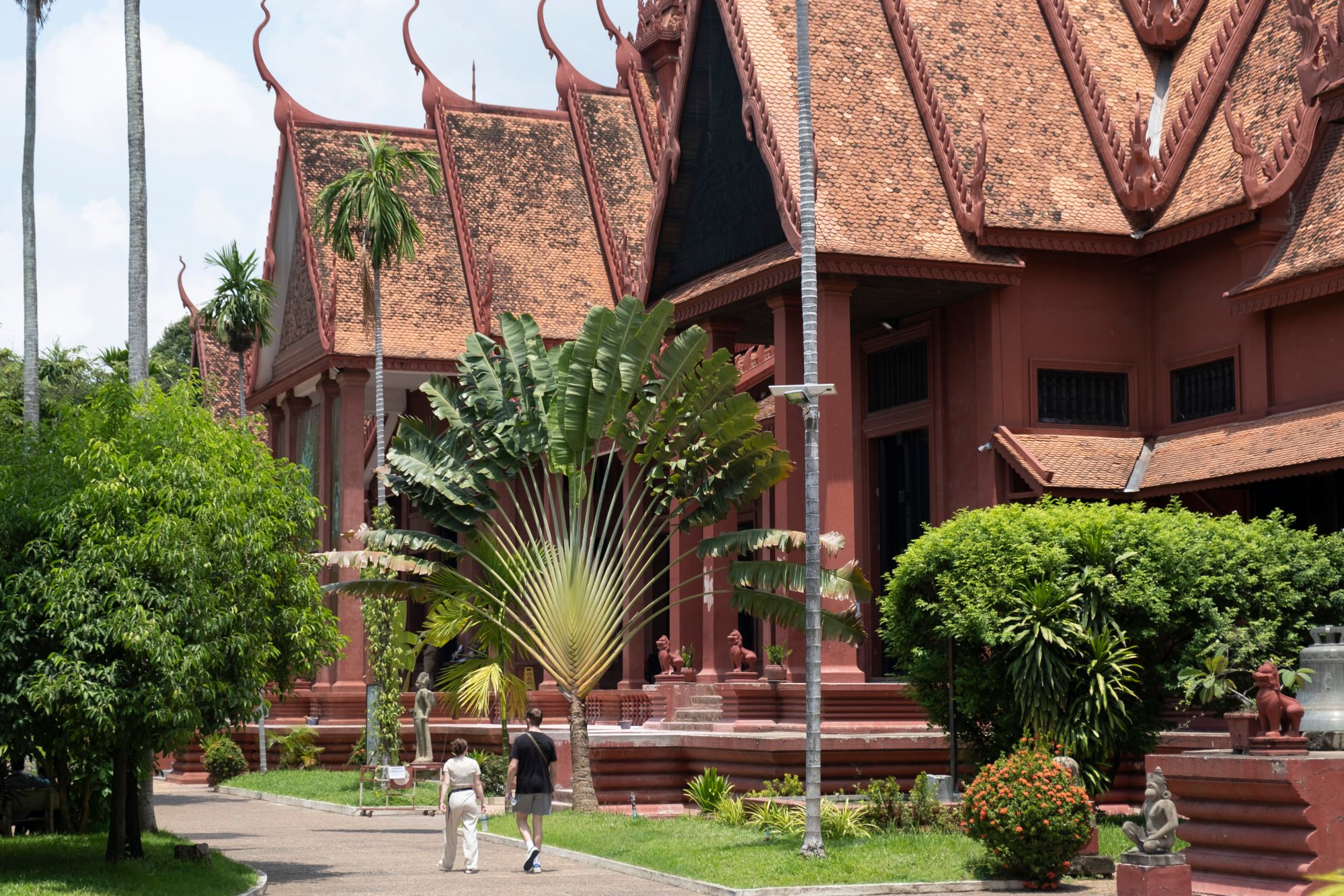
How a tour of Cambodia’s capital Phnom Penh reveals a heritage hotbed beneath the new Chinese money
- Phnom Penh might seem like one huge building site fuelled by Chinese money but heritage tours uncover its abundant historical and traditional architecture
- Highlights include the art deco governor’s house, the stucco-clad Chinese House, and a Taoist temple, the only one of its kind to survive the Khmer Rouge
The screech of electric saws and pounding of jackhammers are never far away in Phnom Penh.
As you explore the Cambodian capital’s tree-lined streets, you might, for a moment, imagine yourself in southern China, given the number of building sites emblazoned with Chinese characters.
At every turn, it seems, something is being torn down or is in the process of going up.

As the capital of the French Protectorate of Cambodia, it was known as the Pearl of the Orient – a nickname it shared with several other cities in the East – on account of its stately boulevards and Parisian-inspired architecture.
Visiting in the 1960s, Singapore’s then prime minister, Lee Kuan Yew, is said to have remarked to Cambodian leader Norodom Sihanouk, “I hope, one day, that my city will look like this.”
Away from Angkor temples, historical sites in Cambodia are being neglected
Keen to discover how much of the old Phnom Penh has survived the rapid growth of the past decade, I book a spot on a Phnom Penh Heritage Tour.
Our French guide, Jean-Pierre Freneau – a resident of the city for 20 years – leads the way. Joining us are three keen selfie-takers from the Philippines.
The tour starts at the old Post Office, in the heart of the French quarter. With its pediments and balustrades, the building gives a firm impression of Phnom Penh’s former grandeur.

At the time of its construction, in 1890, the country had been under French suzerainty for close to 30 years, as the narrator on our digital tablets tells us, and would remain so until the country’s independence, in 1953.
The Post Office is flanked by two other buildings from the late 19th/early 20th centuries. On one side is the former Indochina Bank, which has been lovingly restored; on the other, the former police headquarters, which has not.
Despite being under the ownership of the Royal Group, Cambodia’s largest investment and development corporation, it has been left abandoned for years.
“We’re trying our best to save it,” Freneau says, in a tone that implies it’s been a long, exhausting effort so far. “There are no laws that protect buildings.”

Half a century later, the hotel was used as a shelter for Cambodians returning from labour camps, following the fall of the Khmer Rouge regime.
Selfies taken, we clamber aboard our electric shuttle bus and continue north, along the riverfront.

Much of Phnom Penh was transformed in the early 20th century by urban planner and architect Ernest Hébrard, who modelled the city after Georges-Eugène Haussmann’s Paris. Today, comparisons to the French capital are fading fast.
Yet amid the ubiquitous construction sites are the art deco governor’s house, in front of which pedicab drivers doze in their vehicles; the stucco-clad Chinese House, once home to a wealthy Chinese trader and, before the pandemic, a fashionable drinking spot; and a Taoist temple, the only one of its kind to survive the Khmer Rouge.
Its renovation was funded by Cambodian-American doctor, actor and author Haing Somnang Ngor (also a survivor of the Khmer Rouge), who gained prominence – and an Academy Award – for his role in the 1984 film The Killing Fields.

We double back and loop around Wat Phnom, the city’s foundational site.
Translated as “temple on the hill”, Wat Phnom’s origins trace back to the 14th century, when a wealthy widow named Penh constructed a shrine to house several Buddha statues she had discovered floating in a tree-trunk along the Tonle Sap River.
Centuries later, it became a popular spot with French colonials for a stroll and boasted an aviary and a zoo.

The current temple dates to 1925 and was another of the city’s few religious sites not targeted for destruction by the Khmer Rouge.
The period of Khmer Rouge rule began with the capture of Phnom Penh in 1975, marking the end of the Cambodian civil war, and continued until the Vietnamese occupied the country four years later.
For those four years, Phnom Penh was a ghost town, its citizens having been forcibly relocated to the countryside as part of Pol Pot’s catastrophic attempt to transform the country into an agrarian utopia.

The city’s religious and cultural institutions were either destroyed or repurposed for agricultural or industrial use.
Such was the fate of the National Library, built in 1924, which was turned into a literal pigsty. Eighty per cent of its 65,000 books were destroyed, the audio tells us, mostly so that the pages could be used to light fires.
The building has since been returned to its intended purpose, its tranquil air restored.

The nearby French Cathedral was completely razed; the site is now occupied by a government building, built in an ersatz colonial style.
Next to the library is the Hotel le Royal, also designed by Hébrard. Built in 1929, its French-modernist design incorporates Khmer motifs.
Guests have included British author and playwright Somerset Maugham, French president Charles de Gaulle and United States first lady Jackie Kennedy, for whom the hotel’s signature drink, the Femme Fatale, was invented.
After Pol Pot came to power, it served as a neutral zone, its facade draped with Red Cross flags.
How eco-tourism saved this stunning Cambodian valley
Next, the audio invites us to use our imagination, as we pass the former site of the Phnom Penh Sports Club (Cercle Sportif, in French), home to Cambodia’s first swimming pool and focal point of expatriate life for more than 100 years.
Yet the club did not fall to Marxist extremists or rapacious developers: it was demolished in 2003 to make way for the new US embassy.
“It was the place to be, to meet people,” says Freneau, a former regular. “It was a big shame. But the US needed a bigger piece of land and the government gave it to them.” He shrugs.
We leave behind the wide avenues and comparative calm of the French quarter and, passing the newly renovated 1930s Railway Station, we cross into the Chinese district.

Here, things are decidedly more chaotic, with tuk-tuks careering around like dodgems and street-food vendors crowding pavements.
Everything is in flux. Yet for every gaping plot where perhaps a French villa once stood, one glimpses, beyond the masses of utility cables, the red-roofs and beige walls of a century-old house.
You can almost picture the city as it might once have appeared, with its mansions and modernist apartment buildings and sultry Mediterranean manner.
Having found a way through the traffic, we reach the Central Market, the city’s major landmark.
Made up of four wings adjoining a large dome, this yellow-painted concrete structure resembles an art deco UFO. The central rotunda is bigger than the one in St Peter’s, in Rome, the audio tells us.

With the trellised windows letting in slivers of light, it possesses a hallowed atmosphere, despite the bustle within.
Further south, the Chinese quarter merges with the historical Khmer quarter. There are no stilt houses here any more, only condos and hotels and a seemingly endless number of banks.
Between the two districts are the National Museum, once home to a colony of bats and today filled with Khmer art; the ochre-coloured Royal University of Fine Arts; and several ornate mansions.

One of the latter is the restored Unesco building, with its decorative tiles and balconies, its peaches and creams, which experts believe was built by a Chinese merchant between 1910 and 1920.
Freneau recalls how, 20 years ago, almost every street was filled with buildings like this, albeit not always in the best of conditions.
“In those days, no buildings were allowed to be taller than the Royal Palace,” he says.

In 2022, China accounted for 50 per cent of the country’s US$4.5 billion in capital investments.
Although profit is the principal driving force, Freneau attributes the loss of the city’s built heritage to the Buddhist concept of impermanence and letting go of the past.
Will Cambodia’s Kampot lose its soul to tourism development?
This would seem ironic, given that much of the destruction wrought by the communists was directed towards eradicating the influence of religion.
The tour ends outside the Royal Palace, with its tiered roofs, gardens and pagodas spread across 18 hectares. We arrive in time to see the king’s motorcade pass through the palace gates, while security guards try to usher us along.
The palace is perhaps the one building here likely to withstand the test of time. Whether much else will, in this fast-changing and storied city, is impossible to guess.

